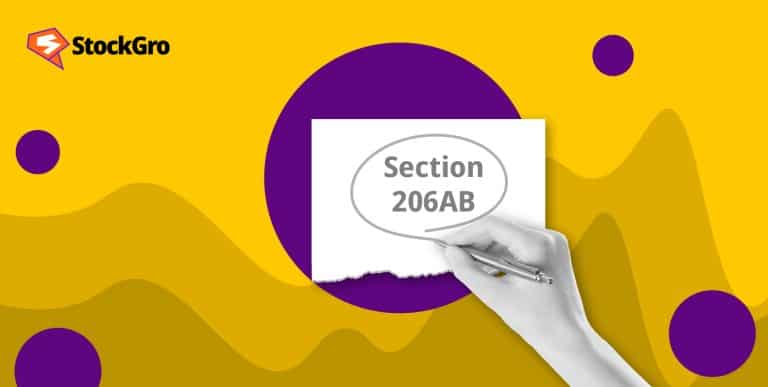
The India Finance Act 2020 introduced a number of measures and reforms to boost economic growth and make tax administration better. This includes reintroducing Section 80M, which is important legislation meant to make taxes easier for businesses.
It lets inter-corporate dividends be subtracted from income, which boosts efficiency and makes investments better within corporate groups. Companies need to know how Section 80M works because it helps them save money on taxes and get ahead financially.
This article expounds on the meaning, application, merits, and historical context of section 80M.
Meaning of inter-corporate dividend
Inter-corporate dividends are dividends that one company pays to another company in the same country. In this common practice, profits are sent up the chain of command as dividends by holding companies and their subsidiaries. However, one must understand these types of dividends to claim tax advantages under Section 80M.
Deduction under Section 80M of the Income Tax Act
Dividends between corporations can be written off against taxable income under Section 80M of the Income Tax Act. In this case, an Indian company can claim if it gets a dividend from another Indian company. The deduction amount is restricted to the recipient company’s cash in dividends.
Let’s consider an example for better understanding:
Scenario: A Ltd, which is a local business, got a payout worth ₹10 lakhs from B Ltd., which is also a domestic company. A wholly-owned subsidiary company of A Ltd. B Ltd. did this deal during FY 2023-24. On June 20th, 2023, A Ltd announced and distributed ₹7 lakhs as its dividends to shareholders.
Therefore, in this situation alone, could A Ltd be allowed to take away ₹7 lakhs through section 80 M for chargeable income? This amount equals the dividend declared by A Ltd and given out. Thus, ₹7 lakhs would be the number after offset against section 80 M.
- Dividend received by A Ltd. from B Ltd.: ₹ 10 lakhs
- Dividend distributed by A Ltd. to its shareholders: ₹7 lakhs
In other words, if A Ltd pays seven lakhs by way of dividend, then that should be claimed as a deduction under Section 80 M because it has been stipulated that it will apply for FY 2023-24 only. Accordingly, the taxable income attributable to A Ltd would decrease by INR Seven Lakhs, reducing their tax liability generally.
The illustration shows how Section 80M helps corporate entities by allowing them to deduct dividends distributed among their shareholders, provided they do not exceed those received from other Indian companies.
Also read: Overview of section 80C deduction and its sub-sections in income tax
Eligibility criteria to claim deduction under Section 80M
For Section 80M deduction to be claimed, the following eligibility criteria must be met:
- The above tax relief applies to those domestic entities that have received dividends and declared dividends from other domestic companies (subsidiaries) during any preceding year.
- The amount deductible is limited by the sum of dividends paid by such a company on or before the due date for filing its return.
- Irrespective of the tax regime under which it operates, Section 80M would allow for a deduction to the domestic company.
Also read: Unlocking tax benefits: Your guide to section 80GG deductions
Benefits of introducing Section 80M in the finance bill
- Tax relief on inter-corporate: Dividends are one of the critical benefits of section 80M for a domestic company that gets a dividend from another domestic company. They will be allowed to claim a deduction on the lesser dividend received and dividend distributed by the dividend-receiving company.
- Promoting investment and growth: This provision enhances investment and synergism by decreasing the tax load on dividends paid between corporations. Companies can make more use of their retained earnings by putting them into investments.
- Applicability to state economic goals: Section 80M concurs with India’s economic aims, promoting the growth of companies while reducing double taxation burdens. It has ensured an equitable, unambiguous taxation system for businesses.
You may also like: What are tax free bonds and how can they help you save?
Historical context
Section 80M existed in an earlier form but was replaced when the dividend distribution tax (DDT) was introduced in 2003. DDT aimed to simplify tax collection by taxing dividends at the company level.
The current technology infrastructure allows tracking of dividend income, leading to the shift from DDT to recipient-based taxation. Section 80M now benefits all domestic companies, reducing double taxation of dividend income.
Bottomline
By re-establishing Section 80M in the Income Tax Act, India continues to streamline its tax framework, encouraging domestic companies to thrive and contribute to the country’s economic development.
This legislation underscores the importance of an adaptive tax policy that evolves with changing economic landscapes and technological capabilities, ultimately benefiting the corporate sector and the economy at large.
FAQs
- When was section 80M introduced?
The Income Tax Act of 1961 introduced Section 80M to prevent double taxation of intercorporate dividends. Nevertheless, it was removed at a later date. The Finance Act of 2020 reintroduced the section effective April 1, 2021, to mitigate tax cascading on dividends following dividend distribution tax (DDT) withdrawal and to encourage efficient dividend distributions among corporates.
- What is the deduction under Section 80 H?
Section 80H of the Income Tax Act 1961 provides an allowance for profits and gains derived by certain newly established small-scale industrial undertakings engaged in manufacturing or producing articles. This concession intends to help young industries by reducing taxable income. Those who qualify can offset 20% of their profits from these operations if they fulfil the conditions and requirements stipulated in the Income Tax Act.
- What is the 80JJAA deduction?
The deduction is allowed under section 80JJAA of the Income Tax Act, 1961 for Indian corporate entities and individuals manufacturing, producing or carrying on any trade activity employing new workers. It is aimed at job creation promotion. Only eligible taxpayers who qualify for it and hire extra staff for a defined period in a year, after satisfying those conditions, can claim 30% of their incremental wage bill over three years as per this provision.
- Can I claim both 80C and 80CCD?
Yes, they can be claimed together because they serve different purposes. The maximum amount of income that can be deducted under section 80C is limited to ₹1.5 lakhs per annum for miscellaneous expenditures such as premium payment for life insurance policies, investments in ELSS or fees paid as tuition fees. Furthermore, NPS contributions and APY come under section 80CCD beyond the limit set for section 80C, along with an extra allowance of Rs fifty thousand when section 80C income has already been exhausted completely.
- What is section 80DD?
This deduction is available to individuals resident in India and Hindu Undivided Families (HUFs) having dependents suffering from disability according to section 80DD of the Income Tax Act,1961. The dependent member must have become disabled during his or her lifetime and must be medically treated, rehabilitated or maintained by the taxpayer for such reasons. It may vary from ₹75,000 to ₹1.25 lakhs depending upon the extent of disablement.
